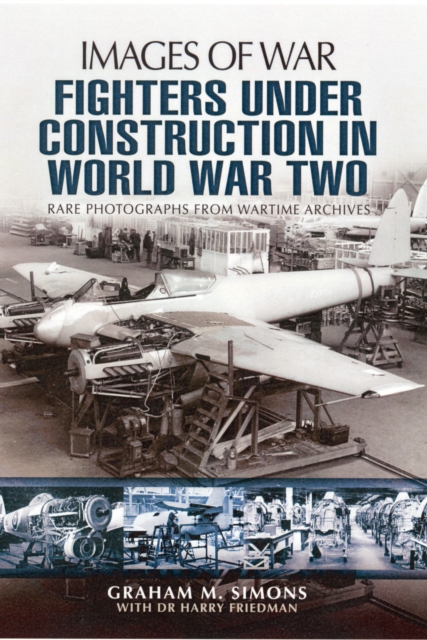
Fighters Under Construction in World War Two: Images of War Paperback / softback
by Graham Simons
Paperback / softback
Description
There has been bookshelf after bookshelf of books compiled, written and published about British aircraft, the Royal Air Force and the activities of its pilots during World War Two.
Tales of derring do, bravery and gallantry quite rightly litter the bookshelves and libraries, but little has appeared in print about the what could be called the unsung heroes, those that designed, built and maintained the fighting equipment used to eventually defeat the enemy.
This is all the more incredible when one realises that there exists a huge archive of images that have survived which clearly show the skills and scale of what went on.
These images of war - many of which are seen here for almost the first time in seventy years - form a remarkable tribute to the designers, engineers and workers who did so much.
Following the end of the Great War, the Royal Air Force was drastically reduced in both manpower and equipment.
The application of a 'Ten Year Rule' in which the British Government foresaw no war being fought during the next ten years resulted in minimal defence expenditure throughout the 1920s. Financial resitrictions went on until the early 1930s, when it at last became apparent that Germany was developing expansionist and aggressive tendencies that could no longer be ignored.
The British Government and Air Ministry at last began to develop plans of their own to expand and develop the Royal Air Force. A number of plans were approved by the Cabinet, but each one was often replaced by a revised one before the original could be completed.
Between 1933 and 1939 the Royal Air Force was given higher priority in terms of rearmament plans than the other services.
The policy was driven by the pursuit of parity with Germany more than by defence and strike needs, for there was no fixed ratio of bombers to fighter aircraft to guide procurement. There could be no expansion without manufacturing capacity and luckily these manufacturers were not only capable of producing, but they also recorded much of their activities and remarkably a huge archive of images have survived which clearly show the skills and scale of what went on. These images of war - many of which are seen here for almost the first time in seventy years - form a remarkable tribute to the designers, engineers and workers who did so much.
Information
-
Item not Available
- Format:Paperback / softback
- Pages:128 pages, Illustrations
- Publisher:Pen & Sword Books Ltd
- Publication Date:01/06/2013
- Category:
- ISBN:9781781590348
Information
-
Item not Available
- Format:Paperback / softback
- Pages:128 pages, Illustrations
- Publisher:Pen & Sword Books Ltd
- Publication Date:01/06/2013
- Category:
- ISBN:9781781590348






